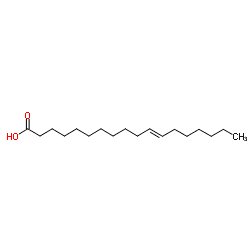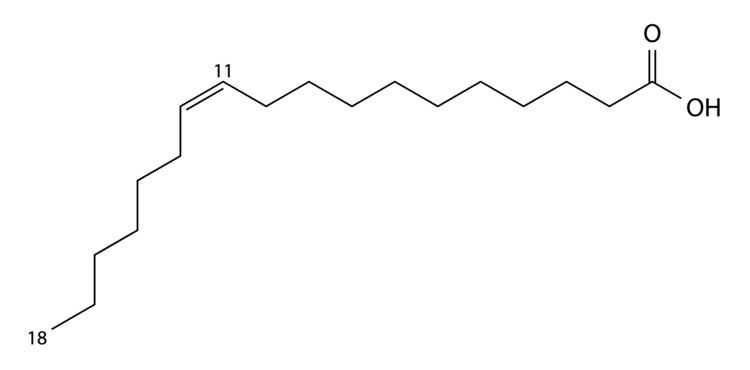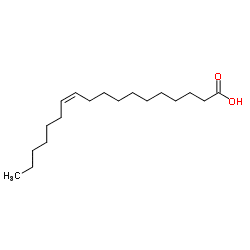Formula C18H34O2 Pubchem 5281127 | Molar mass 282.461 g/mol | |
 | ||
Vaccenic acid meaning
Vaccenic acid, also known as (E)-Octadec-11-enoic acid is a naturally occurring trans-fatty acid found in the fat of ruminants and in dairy products such as milk, butter, and yogurt. It is also the predominant fatty acid comprising trans fat in human milk.
Contents

Its IUPAC name is (E)-11-octadecenoic acid, and its lipid shorthand name is 18:1 trans-11. The name was derived from the Latin vacca (cow).

Vaccenic acid was discovered in 1928 in animal fats and butter. It is the main trans fatty acid isomer present in milk fat. Mammals convert it into rumenic acid, a conjugated linoleic acid, where it shows anticarcinogenic properties.

Its stereoisomer, cis-vaccenic acid, is an omega-7 fatty acid, is found in Sea Buckthorn (Hippophae rhamnoides) oil. Its IUPAC name is (Z)-11-octadecenoic acid, and its lipid shorthand name is 18:1 cis-11.

Health
A 2008 study at the University of Alberta suggests that vaccenic acid feeding in rats over 16 weeks resulted in lowered total cholesterol, lowered LDL cholesterol and lower triglyceride levels. The researchers are preparing to conduct further research, including human clinical trials.
Vaccenic acid is also found in human orbitofrontal cortex of patients with bipolar disorder and schizophrenia.
Alkaline phosphatase inhibited 25% by vaccenic acid in osteoblasts.
Oxidation of omega-7 unsaturated fatty acids on the skin surface, such as palmitoleic acid and vaccenic acid, may be the cause of the phenomenon commonly known as old person smell.
